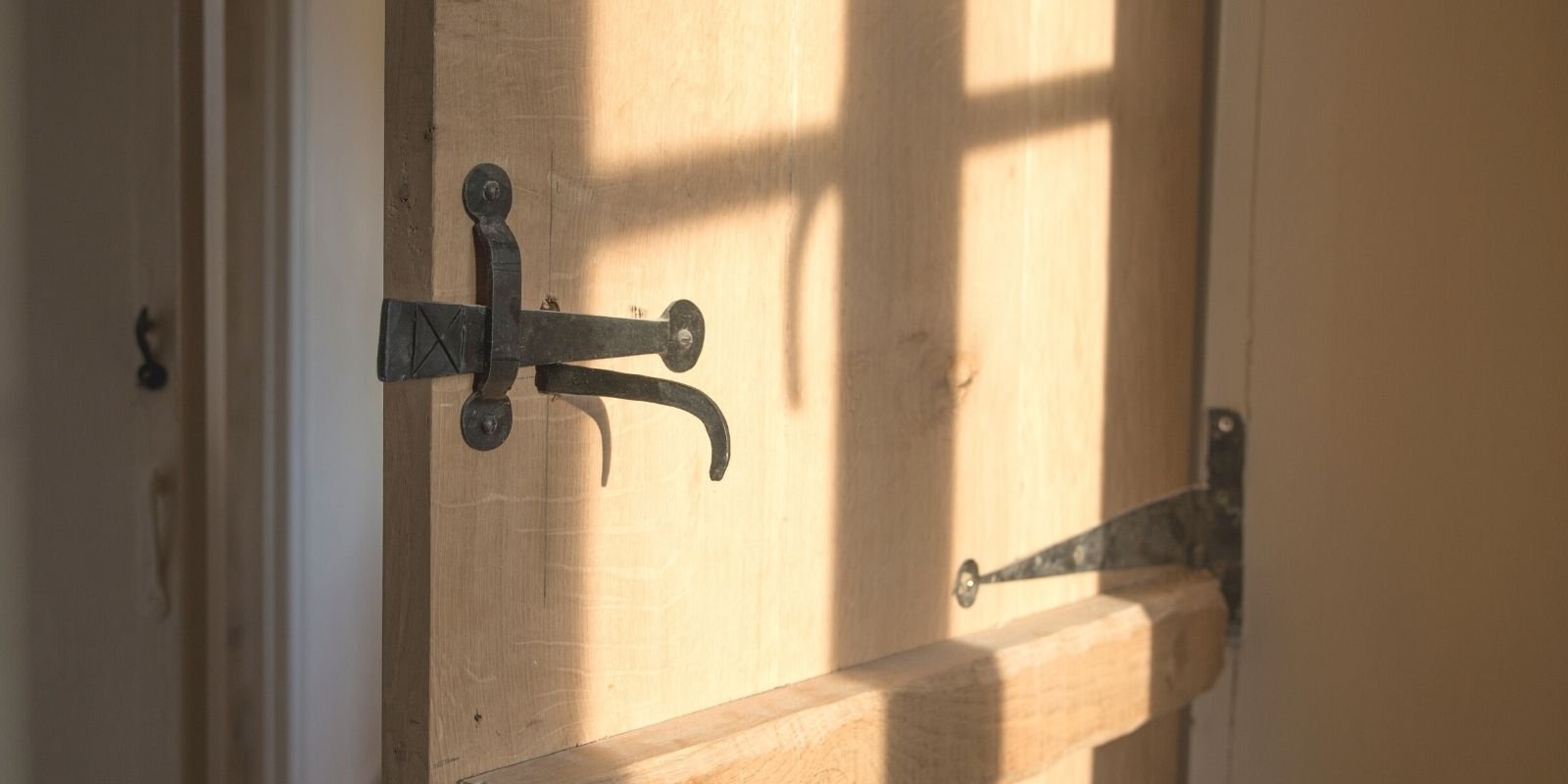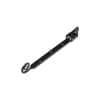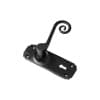Since the dawn of its creation, the humble nail has achieved much. It has evolved drastically to suit our every need, from the simple hand wrought nails to the wire nails formed in the late 18th century. The first evidence of large-scale nail making originates in Egypt, with bronze nails dating back to 3400 BC.

The Hand Forged Nail
The earliest nails were made by a hand forged process. The tools of the trade were simple: forge, anvil, hammer and iron at the most. The method itself was the gruelling part. To begin, the iron ore was heated to melting point until it formed a dense spongy mass within the forge.This would then be poured into moulds to cool into square rods, with the metal produced given the title of ‘wrought iron’. A reheating process would follow, before the blacksmith cut off a nail length and hammered all four sides of the softened end to form a point- the driving end of the nail. This would end with the hot nail being inserted into a hole within the anvil. Four glancing blows of a hammer would form a rose head, thus completing the journey from raw material to building implement. Not one nail made through this process is the same, which is one of the reasons that hand forged nails are still popular to this day. Though not as popular as the later mentioned wire nail, they are often used on restoration projects within old properties to give an authentic rustic look that wire nails cannot achieve.

Nails As Currency
In the middle ages, nails were a valuable commodity and were bartered and traded as a form of currency. The coinage ‘penny’ refers to the price placed upon one hundred nails.
During the American Revolution, people hunted for nails using any means necessary, going so far as to burn abandoned buildings to the ground. Once reduced to ash, nearby villagers would flock to the site as vultures would to carrion. They would eagerly pick out the small treasures before returning home, pockets filled, the iron still hot.
However, this was not the only way society strived to overcome poverty using nails. Using a far more honest method, many families began setting up small sites for nail manufacture within their homes, either by the fireplace or in the back yard. During either the evening or a day of bad weather, the entire family would come together at their makeshift forge and spend hours crafting their own nails for either personal use or barter.
Even Vice president Thomas Jefferson took part in the craft, proudly stating in a letter that “I am myself a nail-maker…” and that “…my new trade of nail making is to me in this country what an additional title of nobility or the ensigns of a new order are in Europe.” (Thomas Jefferson, 1795.)
The Cut Nail
The hand forged nail soon evolved into the cut nail, with the manufacturing process shaping into something more automated and far less time consuming than previously. Though the machines used still had to be manned by either men or women, they cut down the time taken considerably, meaning the end product could be sold for less than before. The process was first created in America, and involved the cutting of large sheets of iron into the required shape, with workers still in place to ensure that fibres of iron still ran down the sides of the finished instrument. Cut nails, otherwise known as square nails, are still used today but on a far lesser scale than in the early 1800’s. People mainly use them for historical renovations or heavy-duty jobs, a far cry from their mass Birmingham manufacture in the 1860’s.

The decline in the use of cut nails was due to the introduction of the inexpensive wire nail. Formed from coils of wire, the earliest wire nails were not, however, made with heavy construction in mind. They were used instead in the manufacture of pocket book frames and cigar boxes during the mid 1800’s. Even in the 1890s, the majority of builders still chose to use cut nails due to their extreme holding power.
But by 1913 this all changed, and 90% of manufactured nails were wire nails, due to their cheap and entirely automated production. They were adapted to suit a wide range of purposes. This meant customers could find more uses for the wire nail than the cut or hand forged type, pushing it to the forefront of the modern day manufactoring industry.
The Nail As A Symbol
In the middle ages, when nails were a precious commodity, there was a traditional custom amongst people to hammer nails into crosses, trees or even rocks, as a form of offering for healing and gratitude - similar to the custom of throwing coins into a wishing well.
There is a mid-section of an ancient tree, now kept behind glass in Vienna, which has hundreds of nails embedded into the trunk. The Stock im Eisen (staff in iron), shown below, has an iron band bearing the date 1575. The first nails were driven into the tree while it was still alive in 1440. Many legends surround this nail tree.

In later years, this idea of the nail as a symbol led to the creation of Nail Men, the first of which was nailed in 1915. The most famous of these nail men is the Wehrmann im Eisen (Warrior in Iron). See below for a close-up of this famous nail man, still standing in Vienna.

Nail men were created to raise funds and inspire an impoverished Germany and Austria during the First World War. The nails hammered into the wooden statues reflected the amount of donation made, with a hierarchy of iron, silver plated or gold plated nails. The placement of the nail also depended upon the level of donation with certain areas costing more or less across the sculpture. For instance, it cost more to hammer a nail into the knight’s shield than in his right sleeve. People across both countries were encouraged to take part in this dramatic show of nationalism, and the nail quickly became a patriotic symbol across the majority of both German and Austrian society.
Thus the modest nail has travelled many paths to reach where it is today: a steadfast feature in both homes and works of art alike.
Comments












.png?v=1702556237935&options=c_fill,w_2260,h_1280)
.png?v=1702556253337&options=c_fill,w_750,h_700)






3 comments
tariah on Oct 11, 2023
wooooow
James Ivanoff on May 25, 2023
I admit I have not made a thorough search but I have never run across a site that tells how to use a nail properly. The modern wire nail is a precision made object. Used properly you will never split the end of a board, improperly a split is guaranteed. Used properly in nailing down decking you will never have a nail head pop up. Look at any nail and you will see the pointed end looks like a pyramid with four smooth facets with the edge between two facets very smooth and the other edge between the facets is rough. There is a reason for that. Further examination will reveal several bumps on the side of the wire shaft just under the head and that the bumps are above the ragged facet edges. Again there is a reason for that. If you pound a nail into wood with either the facets or the smooth edge oriented across the grain of the wood you will cause the wood to split. If the rough edges are across the grain they will cut the wood fibers and force them downward as the nail is driven in. Once the nail is finally set the cut fibers will tend to straighten and lock onto to ribs embossed in the nail. No splits, no pop ups! One more thing; for a given length crating nails are smaller diameter than common nails and are coated with a substance that is both a lubricant and a glue. As you pound them in the coating melts from the friction of the nail being forced into the wood and once there it cools and locks the nail in place. That’s why crates are so hard to knock apart.
Molly on Jun 28, 2022
Thank you so much for this informative article!! So appreciate your knowledge and expertise and love for craftsmanship.